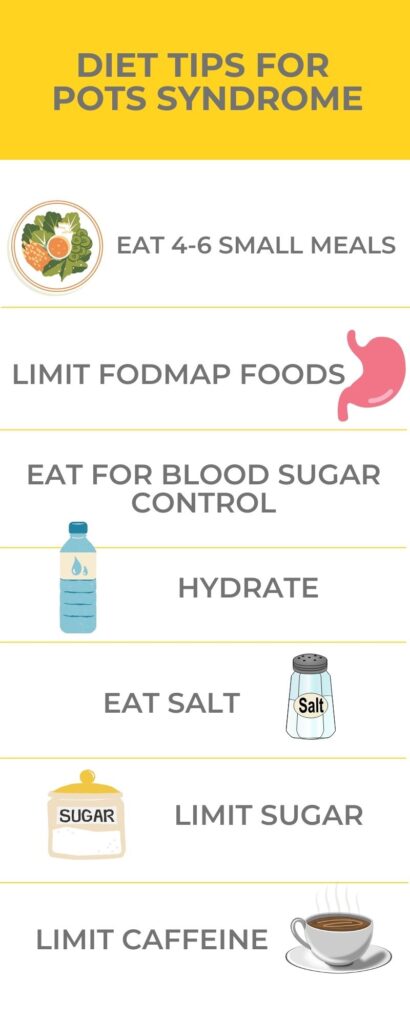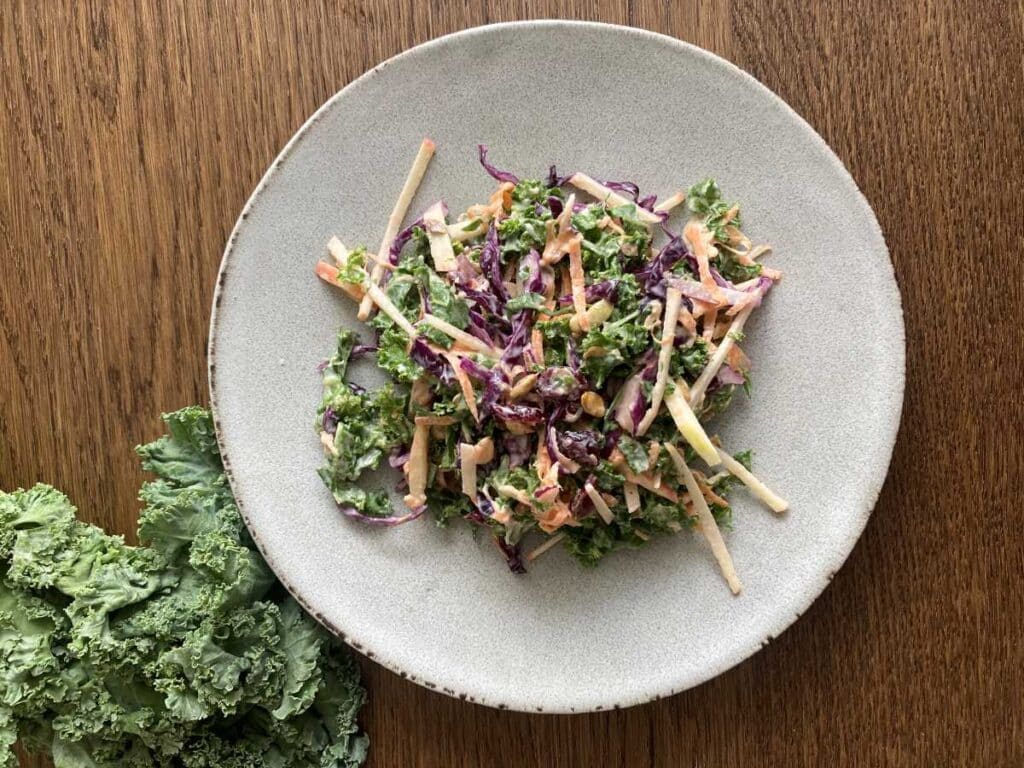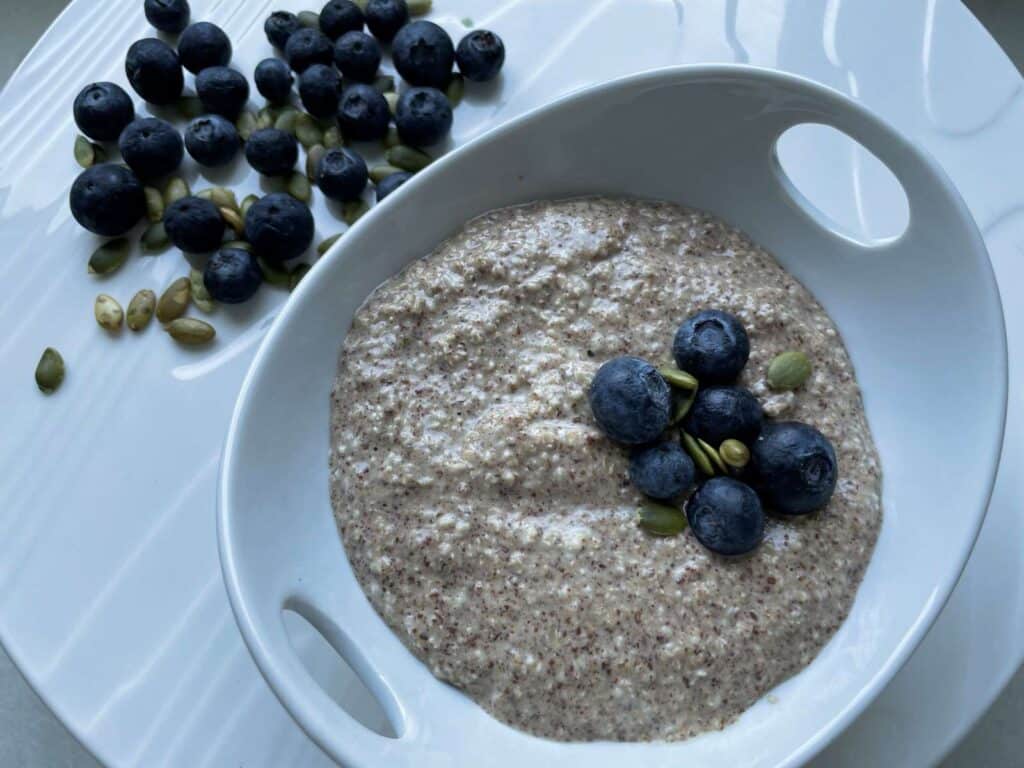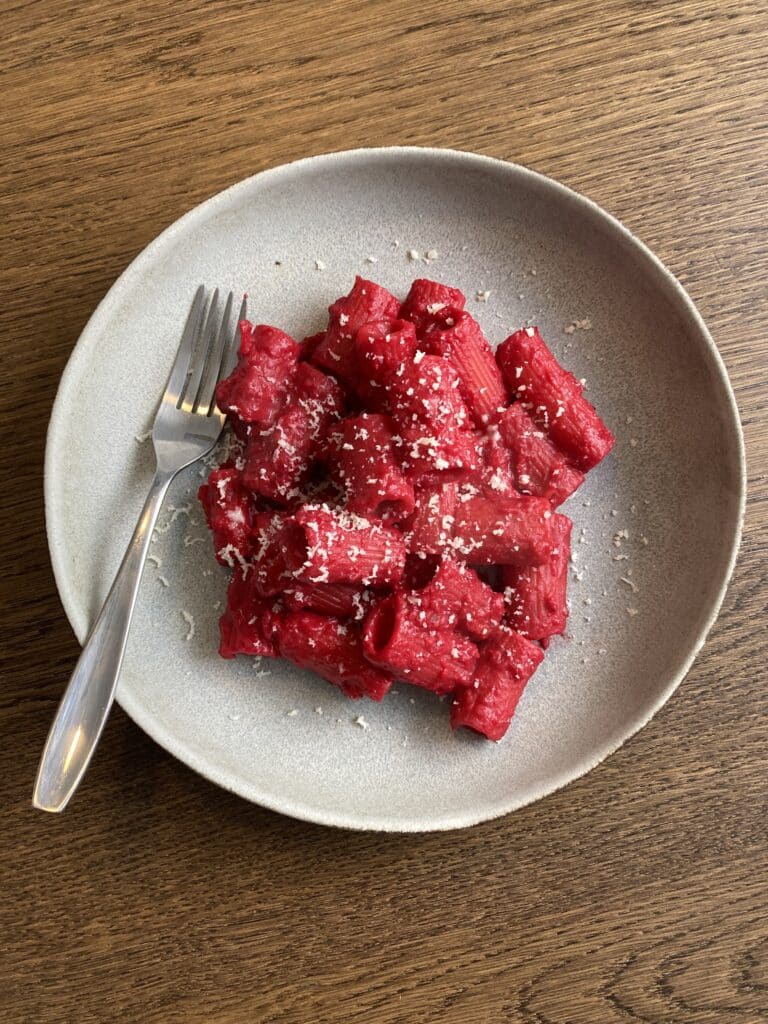The POTS syndrome diet is an essential component of managing Postural Orthostatic Tachycardia Syndrome, a condition that affects the autonomic nervous system and can lead to a range of debilitating symptoms.
While there is currently no cure for POTS, lifestyle modifications such as diet can greatly improve quality of life.
In this blog post, we will discuss the importance of a POTS syndrome diet plan and provide tips and strategies for incorporating healthy, nutrient-dense foods into your daily routine.
Top Takeaways
- POTS (Postural Orthostatic Tachycardia Syndrome) is a condition that affects the autonomic nervous system and leads to symptoms like a fast heart rate, dizziness, fatigue, and more when transitioning from lying down to standing up.
- While there is no cure for POTS, lifestyle modifications such as diet can significantly improve the quality of life for those with the condition.
- A POTS syndrome diet involves individualized dietary plans, often developed with the help of a Registered Dietitian. Dietary patterns like the Mediterranean diet, DASH diet, and others rich in heart-healthy nutrients can be beneficial.
- Dietary strategies for managing POTS symptoms include eating smaller, frequent meals, limiting FODMAP foods, controlling blood sugar levels with fiber-rich foods, staying hydrated, increasing salt intake, and avoiding trigger foods like added sugars and excessive caffeine. Other lifestyle changes, including exercise, medical compression stockings, monitoring vital signs, and stress management, can also contribute to symptom relief. Consulting with healthcare professionals is essential for a comprehensive approach to managing POTS.
Pin It For Later!
What Is POTS?
POTS is an acronym that stands for Postural Orthostatic Tachycardia Syndrome. It is a condition that causes a number of symptoms when one transitions from a laying down position to standing up.
Unfortunately, PTOS is often misunderstood or misdiagnosed which is frustrating to most.
Symptoms include:
- Fast heart rate
- Heart palpitations
- Dizziness
- Fatigue
- Lightheadedness
- Fainting
- Muscle weakness
- Exhaustion
- Shortness of Breath
- Chest pain
- Headaches
- Bloating
- Feeling sick
- Disrupted sleep
- Brain fog
In fact, if we look at each word of POTS individually, it tells use a story.
- Postural: related to the position of your body
- Orthostatic: related to standing upright
- Tachycardia: defined as a heart rate over 100 beats per minute
- Syndrome: a group of symptoms that occur together
It tells us that your body has trouble keeping your blood pressure steady and stable, and can’t balance your blood vessel constriction and heart rate response as well as it should.
The biggest risk to people living with POTS is getting hurt if they faint or fall.
Prevalence
Interestingly, POTS diagnosis has increased since COVID 19, as approximately 2 to 14% of people develop POTS after a COVID 19 infection (1).
POTS Syndrome Diet
Living with POTS can interfere with daily living. Unfortunately, there is no cure for POTS. But in most cases symptoms can improve.
Lifestyle changes like a POTS syndrome diet can improve one’s quality of life when living with POTS. Don’t worry, it’s not a restrictive diet.
I recommend working with a Registered Dietitian to form a POTS diet plan that is individual to you. Often if you are living with POTS you may have other food allergies, dietary sensitivities or restrictions like gluten intolerance or celiac disease and a Registered Dietitian can help you navigate this.
POTS diet
There is no best diet for POTS, but we do know that Dietary patterns like the Mediterranean diet, the DASH diet, the portfolio diet, PAD diet and MIND diet are great areas to get started.
These dietary patterns include eating plants like vegetables, fruits, whole grains, nuts, seeds and plant protein often for their heart healthy nutrients like fiber, plant sterols, potassium, magnesium and calcium. They help to provide adequate vitamins, minerals and antioxidants to promote health and longevity.
Once you get through understanding these basic dietary patterns and choose more ant inflammatory foods, you can also use food to help manage symptoms. Use this Printable Anti Inflammatory Food List (PDF) or low cholesterol food list to learn more.
If you are looking for recipe ideas from cookbooks check out these DASH diet and plant based cookbooks for more ideas.
Some dietary strategies to manage symptoms include includes eating smaller meals to reduce abdominal pain and getting full too quickly. Eating certain foods to stabilize blood sugars. As well as considering your fluid and salt intake.
Using Food For Symptom Management With POTS
Eat 4-6 Small Meals Everyday
One common symptom of POTS is stomach issues like abdominal pain and feeling full quickly.
Eating a large meal may make your symptoms feel worse because your body needs to redirect the blood to your stomach to aid in digestion.
When living with POTS symptoms are often present because more blood is pooling in the lower part of the body and not being returned to the upper body (heart). Eating large meals and redirecting the limited blood to the stomach can further worsen the symptoms you may be experiencing.
What can be done?
Instead, on large meals try eating 4-6 small meals throughout the day, instead of 2-3 large meals to help with this.
Eating slowly and more mindfully can also assist with the management of these symptoms.
An example day could look like this
- Breakfast: Pecan pie overnight oats made with soymilk and topped with pumpkin seeds.
- Snack: Red bean smoothie
- Lunch: Protein tomato soup with roasted black beans
- Snack: Greek yogurt, steel cut oat granola and berries.
- Dinner: This pesto butter salmon dish has a good dose of fat, carbohydrate and protein.
- Snack: Salted almonds and a piece of fruit
Limit FODMAP Foods
If continued digestive problems or digestive issues are noticed after you reduced portion sizes, a low FODMAP diet may help reduce bloating, stomach pain, and promote better bowel movements.
This is an intense diet that eliminates and reintroduces foods to understand individual sensitivities in the digestive tract.
It is very strongly recommended to consult a Registered Dietitian if trying this diet out. They can also assess for other causes of gastrointestinal symptoms like gluten or dairy intolerances.
Eat for Blood Sugar Control
Blood sugar goes up and down throughout the day. Blood sugar spikes can play a role in symptoms like fatigue, blurred vision, headaches, shortness of breath, weakness and confusion.
Luckily, eating fiber rich foods can help reduce blood sugar spikes and help manage POTS symptoms.
What Is Fiber
Dietary fiber is a type of carbohydrate that cannot be digested by the human body. It is found in plant-based foods, such as fruits, vegetables, whole grains, nuts, and seeds.
When we eat fiber-rich foods, they take longer to digest, which means that the carbohydrates in those foods are released more slowly into the bloodstream. This can help prevent spikes in blood sugar levels and can help keep blood sugar levels more stable over time.
High Fiber Recipes
Here are some fantastic high fiber recipes to try.
Fluid Recommendations
It is important to work with your healthcare provider to understand if you have hypovolemic form of POTS. If you do this means you have a low blood volume, and your healthcare provider would recommend focusing on increasing both fluid and salt.
Often fluid recommendations are around 2 to 2.5 L per day. It has been shown that staying hydrated resulted in improvements with standing heart rate, standing blood pressure, and symptom management.
Improving hydration, increases blood volume and helps blood flow to the head which alleviates dizziness.
An easy way to know you are well hydrated is if your urine is a clear yellow.
Salt Recommendations
Increasing sodium intake is recommended because the amount of sodium is directly linked to circulating blood volume. And the more volume of blood there is, the more tolerable of changing positions and thus less symptoms.
So how much salt for POTS syndrome?
Getting enough salt often means increasing sodium to more than 3,000 mg can help with water retention (2).
Some studies even suggest increasing to 10,000 mg of sodium per day in very symptomatic individuals, and only if prescribed by a doctor (2).
Generally, 2-4 grams of sodium per should be sufficient in well in individuals living with well managed POTS. But of course, you want to consult with your healthcare professional to ensure you don’t have any contradictions of a high salt diet like heart failure or kidney disease (2).
Thus, how much salt for POTS syndrome varies and should be discussed with your doctor.
On average, how much salt for POTS syndrome is at least double the amount of sodium that is recommended by the FDA (adults generally need no more than 2300mg/day). This means it’s important to focus on starting a high-salt diet by adding healthy but salty nutrient-dense food that can help increase blood pressure.
It is recommended to eat salty food over salt tablets as these are generally less tolerated and may cause upset stomach.
| Recommended High-Salt Foods | Some Examples |
| Broth | Chicken or beef broth |
| Pickles | Dill pickles or pickled vegetables |
| Olives | Green or black olives |
| Fish | Sardines (like this sardine dip) or anchovies |
| Canned Vegetables | Tomatoes, green beans, or mixed vegetables |
| Canned Beans | Black beans, chickpeas, or kidney beans |
| Soups | Vegetable or bone broth-based soups |
| Cottage Cheese | Plain cottage cheese |
| Nuts and Seeds | Salted almonds, cashews, or pumpkin seeds |
It’s important to limit salty processed snacks like chips and crackers that are high in salt, but low in healthy fats, protein, and fiber. These types of snacks can contribute to blood sugar spikes, which can worsen POTS symptoms.
Instead, choosing healthy, nutrient-dense snacks like the ones listed above can help keep you nourished and energized throughout the day.

Foods To Avoid with POTS
There are a few foods to avoid with POTS as they can trigger symptoms of dizziness, fatigue, and rapid heartbeat.
Added Sugar
Limiting sugar and simple carbohydrates is important for blood sugar control. As discussed above, blood sugar goes up and down throughout the day. Blood sugar spikes can play a role in symptoms like fatigue, blurred vision, headaches, shortness of breath, weakness and confusion.
Sugar-containing foods to avoid with POTS include sweetened beverages and processed foods. They can cause blood sugar spikes and drops, which can trigger or worsen symptoms. Sugar spikes and crashes and cause sleepiness or drowsiness after a meal.
Foods high in added sugar are:
- Sugar-sweetened beverages such as soda, energy drinks, sports drinks, and sweetened tea or coffee.
- Processed foods such as cakes, cookies, donuts, candy, and other sweets.
- Packaged snacks such as granola bars, fruit snacks, and crackers that contain added sugars.
- Breakfast cereals that contain added sugars, such as flavored oatmeal or sugary cereals.
Instead, try these ideas to reduce your intake of added sugars:
- Swap soda and other sugary drinks for water (Pineapple Cucumber Ginger Lemon Water), unsweetened tea, or sparkling water with a splash of fruit juice.
- Swap sugary breakfast cereals for protein baked oats or whole grain cereal with no added sugars. You can add fresh fruit or nuts for flavor and crunch.
- Swap candy and sweets for fresh fruit, dried fruit, a small serving of dark chocolate or these Chocolate Covered Chickpeas
- Swap sugary baked goods like cookies and cake for healthier homemade versions made with whole grain flour, nuts, and dried fruit.
- Swap sweetened yogurt for plain yogurt with fresh fruit or a drizzle of honey.
- Swap processed snacks like chips and crackers for whole foods like vegetables with hummus or guacamole, or a small handful of nuts.
Caffeine Intake
There is no formal recommendation that caffeine can help or hurt general symptoms of POTS. However, drinking too much caffeine in pop, coffee or energy drinks or tea could be a diuretic and proper hydration is important in symptom management.
Individuals living with POTS are more sensitive to dehydration, and thus needs to be top of mind.
Stay Hydrated
- Water is the best choice of fluid intake because it doesn’t have any added sugar and wont impact your blood sugar levels.
- That being said, using electrolytes can also be helpful in maintaining fluid balance. This could be something like coconut water or Pedialyte.
- You can also make your own adrenal cocktail or mineral mocktail which contains various ingredients that are rich in calcium, magnesium and potassium. Check out these great mocktail recipes.
- Smoothies are also a fantastic way to stay hydrated, but also provide nourishment, and keep your blood sugar stable. When making smoothies, they need a balance of all 3 macronutrients, carbohydrates (that are high in fiber), healthy fat, and protein. My favorites include: a smoothie to lower cholesterol, a red bean smoothie, chocolate avocado smoothie.
- Decaffeinated coffee or tea can also contribute to your intake
- Soups or broths are also helpful to stay up on your fluid goals, while adding salt.
With extra fluid consumption, comes more bathroom breaks! Know where the closest washroom is.
Other Helpful Tips
Grocery Shopping
Being prepared for grocery shopping is important.
Standing in lines for a long period of time can make symptoms worse. Bringing water and salty snack choices with you while shopping can help.
If you are waiting in line at check out try flexing and squeezing your feet or muscles, or shifting your weight from one foot to another to manage symptoms.
Or if you are shopping during peak times, try to bring someone along to help you shop, carry the groceries and wait in line.
Top 9 Dietary Tips
- Drink 2-2.5 L per day of fluids: Purchase a fancy water bottle that you don’t mind taking around with you wherever you go. It can serve as a reminder, but also as a fashion accessory!
- Eat small frequent meals throughout the day
- Eat slowly and mindfully
- Always have water and salty snacks on your person to help manage the symptoms
- Increase sodium to around 3,000 mg per day: This can be done with eating salty snacks (see above), or you can add electrolyte replenishers like coconut water.
- Choose high fiber foods
- Limit sugars and sweets
- Plan ahead with grocery shopping
- Follow an anti-inflammatory diet like the Mediterranean Diet
Can you cure POTS with diet? It doesn’t appear that a POTS diet alone can cure POTS, but modifying the way you eat can help reduce symptoms.

Other Ways To Manage POTS
If you are looking for POTS syndrome natural treatment, try these important lifestyle changes as ways to manage symptoms.
Alcohol
Alcohol is a food to avoid with POTS. Avoid consuming alcohol as it is a diuretic that dehydrates the body and worsens tachycardia, leading to an increase in heart rate. For those who want to join the fun but don’t want to drink, try making mocktails instead.
Exercise
Participate in a cardiac rehabilitation program tailored for individuals with POTS syndrome is a natural treatment. Incorporate resistance and aerobic exercise that are similar to those that recondition the heart after a heart event. Recommended exercises include yoga, basic walking, and other low-impact activities that focus on breathing and slow-paced movements. Be sure to transition from sitting to standing slowly when engaging in physical activity.
Medical Compression Stockings
Use medical compression stockings as another medical treatment for POTS syndrome to push blood from your legs upward to alleviate common POTS symptoms like dizziness. You can purchase these stockings at the pharmacy.
Monitoring Pulse and Blood Pressure
Track your pulse and blood pressure throughout the day and record your findings. Use these recordings to identify patterns and triggers for POTS symptoms. Bring this information to your healthcare appointments to help with problem-solving and the implementation of different strategies to alleviate POTS symptoms.
Sleeping Well
Practice sleep hygiene, such as avoiding TV or screens one hour before bed, maintaining a consistent sleep schedule, and ensuring a comfortable sleeping temperature. Raise the head of your bed to help circulate blood, and keep a large glass of water and a salty snack on your bedside table to consume before getting up in the morning, as you may be dehydrated from sleeping.
Avoiding Heat
Prolonged heat exposure can trigger tachycardia, so it is important to stay cool by avoiding the sun, hot tubs, and saunas, and using lukewarm water when showering or showering with a chair.
Managing Stress
POTS syndrome natural treatment also includes meditating and speaking with someone about living with a chronic health condition. This can help ease the mental load of living with POTS.
Building Support
Openly communicating your diagnosis with loved ones can increase their awareness and make it easier for you to ask for help when needed. Joining POTS support groups online can also help normalize the condition and provide helpful strategies to manage symptoms.
Final Thoughts
Trying a POTS diet, and making dietary changes that can stabilize blood pressure and improve POTS symptoms is an important strategy because management is crucial as symptoms may take years to disappear on their own.
Seeking medical treatment from registered healthcare providers is essential, and working with a Registered Dietitian can be helpful to understand your specific needs to form a POTS diet plan that works for you.
Always consult your healthcare team before making changes to your treatment plan. Remember, managing POTS can be challenging, but it is not impossible.





Why would you recommend a DASH diet for POTS patients who NEED more sodium to increase volume levels?